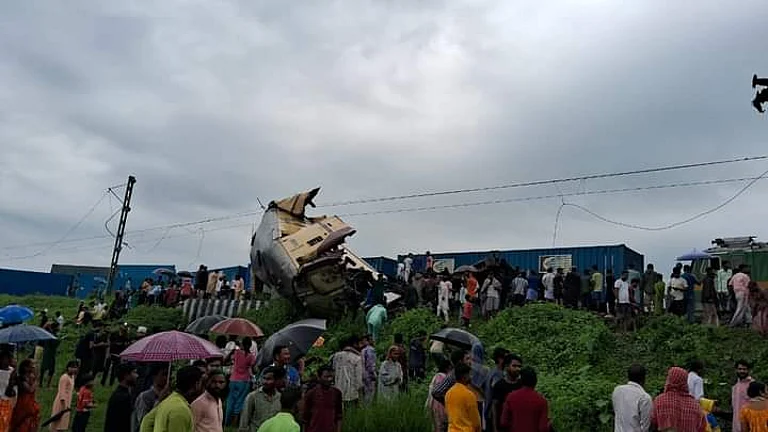Kavach, the Indian-made safety system which designed to help prevent accidents if two trains are moving on the same line, was missing on the Darjeeling tracks where the Sealdah-bound Kanchanjungha Express collided with a goods train on Monday.
Kanchanjungha Express Accident: Could 'Kavach' Have Prevented Mishap? Anti-Collision System Explained
At least 15 passengers died and 60 others were injured after three rear coaches of the Kanchanjungha Express derailed this morning, officials said.
At least 15 passengers died and 60 others were injured after three rear coaches of the Kanchanjungha Express derailed this morning, officials said.
As the major accident hit the headlines, it brought back the traumatic memories from Odisha's Balasore train accident and along with it, an old video Railways Minister Ashwini Vaishnaw explaining the Kavach system.
Chairman of the Railway Board, Jaya Varma Sinha, said at a press conference, "The first indications suggest that this is case of signal disregard. Kavach needs to be proliferated, planned for West Bengal."
According to NDTV, the safety system is planned to be deployed on the Delhi-Guwahati route under its goal of covering 6,000 km of tracks by 2025. "Bengal falls within the 3,000 km of tracks set to be protected by Kavach this year. The system will be applied to the Delhi-Howrah route," Sinha told the media outlet.
Reportedly, the Kavach safety system is in place on over 1,500 km of tracks. The central government had planned to bring 2,000 kms of rail network under Kavach during the 2022-2023 time period, aiming to cover about 34,000 kms of rail network.
Former Executive Director of Railway Board, Prempal Sharma, told NDTV that if Kavach was deployed, an accident like today's could probably be avoided. "However, it's a costly system to operate," Sharma said.
WHAT IS KAVACH?
Developed by Research Design and Standards Organisation (RDSO) in collaboration with the Indian Railways, Kavach is indigenous automatic train protection (ATP) systems for enhancing the safety of running trains.
The project was announced as part of the Atmanirbhar Bharat initiative in the 2022 Union Budget, aimed at bringing 2,000 km of rail network under the world-class technology of Kavach.
FEATURES OF KAVACH SAFETY SYSTEM
Some of its key features include:
Automatic brake application in case the locomotive pilot fails to act
Availability of line-side signal display in the cabin for improved visibility in foggy conditions and at higher speed
Automatic whistling at level crossings
Continuous updating of movement authority
Collision avoidance through direct loco-to-loco communication
Inclusion of an SOS feature to control trains in emergency situation
Notably, the Radio Frequency Identification (RFID) tags are placed on the tracks and at station yards and signals, so that tracks can be identified and trains can be located along with their direction.
When the system is activated, all trains within 5 km will hit brakes to let the train on another track pass through safely.
In 2022, Vaishnaw personally tested the system, where it worked perfectly well.
During the trial, the Kavach system initiated the automatic braking system and halted the locomotives 380 metres apart. Crossing of the red signal was also tested and the automatic whistle sound was also loud and clear.
Further, Kavach automatically reduced the speed to 30 kmph from 60 kmph as the locomotive entered the loop line, it was reported.
